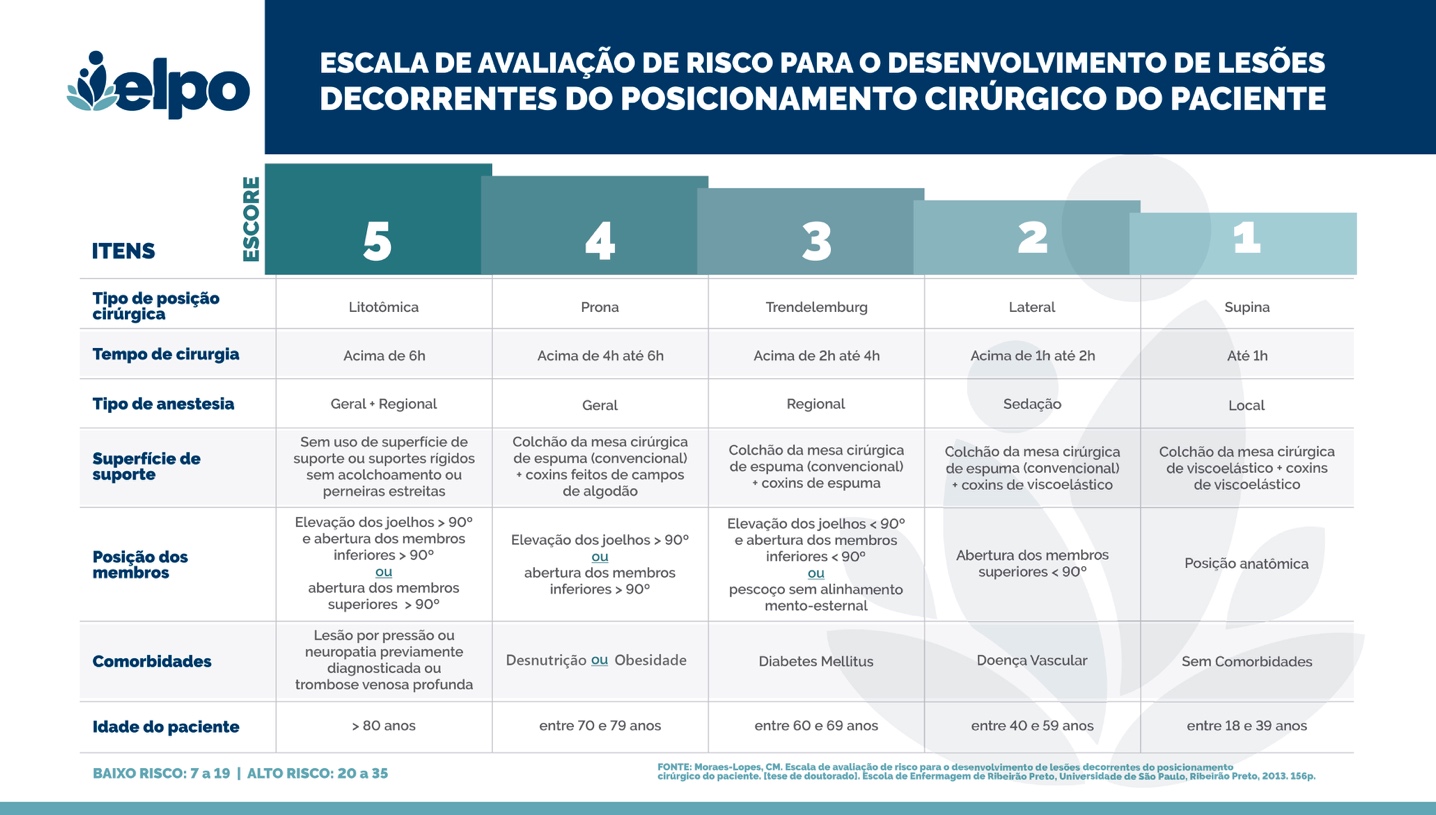The Risk Assessment Scale for the Development of Injuries Resulting from Surgical Positioning (ELPO) directs health professionals to recognize patients at risk of developing complications, in addition to facilitating and speeding up decision-making about the care that should be implemented. . In this way, it will be possible to provide excellent care, based on evidence and guarantee the safety of the surgical patient (FIGURE 1).

The construction of the ELPO was based on the best available scientific evidence related to the impact of surgical positioning on the patient's body, the anatomo-physiological implications of the different types of positioning, the risk factors related to the development of lesions resulting from the surgical positioning of the patient and the injury prevention strategies. The risk assessment of the patient through the ELPO brings together 7 intrinsic and extrinsic factors of the surgical patient and their condition at the time of positioning, indicating who is the patient who needs special care in order not to develop postoperative complications related to positioning.
ELPO was the result of the Doctoral Thesis of the Brazilian Nurse, Prof. Dr. Camila Mendonça de Moraes, at the University of São Paulo at Ribeirão Preto College of Nursing (EERP-USP), under the guidance of Prof. .
The author is a Specialist in Clinical-Surgical Nursing, Biomedical Engineering, Pro-oxidative Therapies and Applied Human Physiology and recently in Clinical Research from Harvard University. She works as an Adjunct Professor at the Federal University of Rio de Janeiro (UFRJ-Macaé) and develops research related to injury prevention strategies, surgical patient safety, evidence-based practice and the translation of scientific knowledge.
In order to facilitate the dissemination of the use of ELPO by professionals working in the Surgical Center, the author developed a mobile application, entitled ELPO App, a free technology available in smartphone and tablet stores. The use of the ELPO App allows the professional to recognize, in a timely manner, patients who need special care during positioning in anesthetic-surgical procedures, as he can interactively indicate the ELPO score. In addition, the professional is able to have a scientific basis to develop care protocols, implement prevention strategies, and effectively prevent the development of injuries or other complications inherent to this procedure, and, in this way, favor patient safety and guarantee excellence in care. assistance.
The ELPO App aims to bring, in a practical, fast, didactic and visual way, the filling of the ELPO with the indication of the patient's risk of developing positioning injuries, in addition to bringing specific care recommendations for the patient being evaluated, since intelligently combines the selection of items during the assessment.
On the home screen you will find the option to assess the patient, evidence about the characteristics of the support surfaces and also information about the development of the ELPO.
When evaluating a new patient, you have the opportunity to click on custom icons that facilitate understanding of each of the risk factors considered by ELPO.
After the selection of all items, the sum of the items will be presented objectively with a final assessment score, together with information about the patient's risk and the option about recommendations for care.
The care recommendations screen is interactive in the sense of pointing out in the image the position in which the patient is in the care related to each part of the patient's body. In addition to specific care recommendations related to the items selected at the time of evaluation and guidelines for possible variations of the selected position.
On this screen it is also possible to review the most recent General Clinical Guidelines on the surgical positioning of the patient, which will help you in the construction of an institutional care protocol.
Use the ELPO App and have a safe experience when positioning your patients for surgery!

Dr. Camilla Mendonca. Editorial Board of the Global Academic Nursing Journal.
